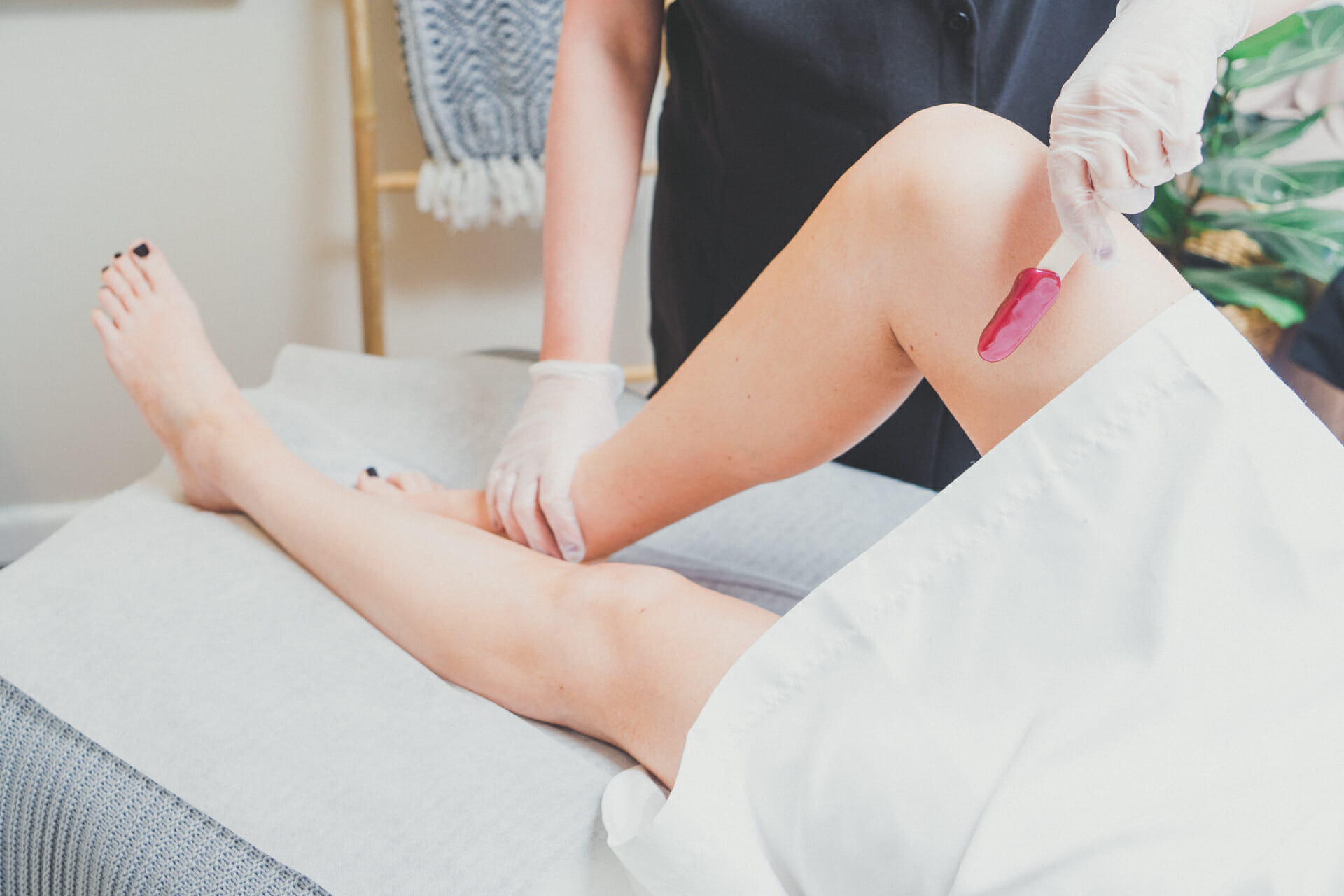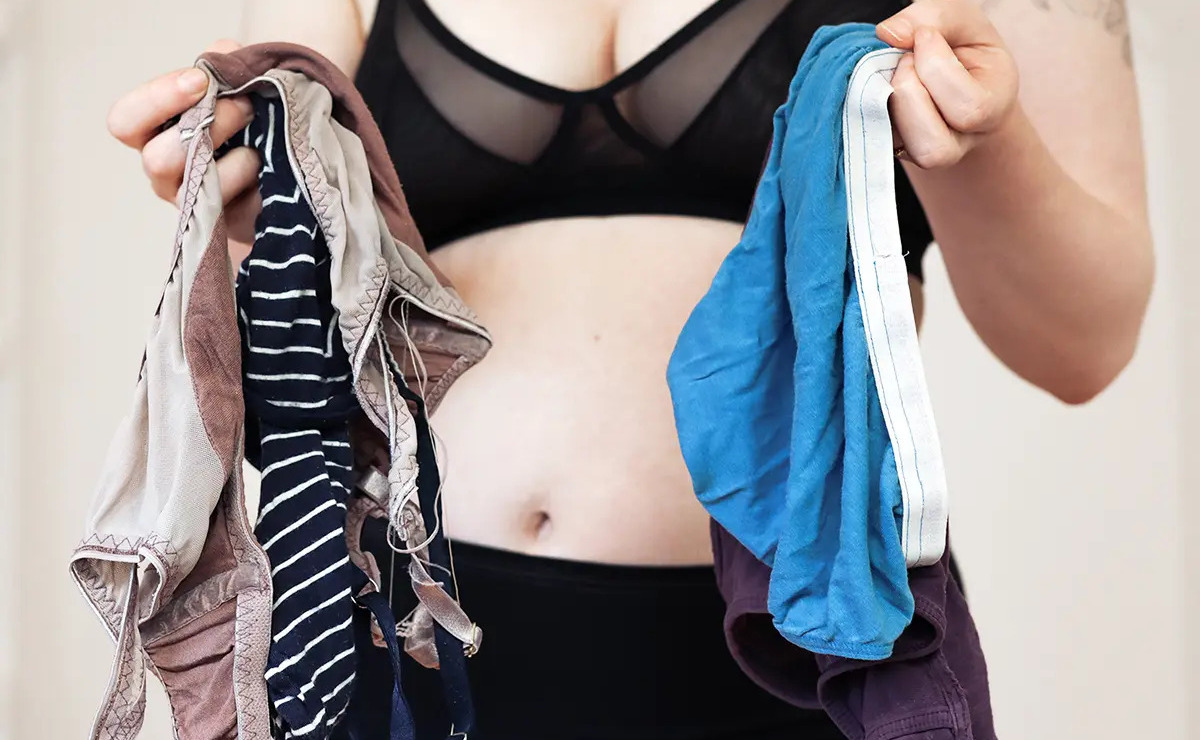Home>Women's Underwear>Bikinis>How Old Do You Have To Be For A Bikini Wax


Bikinis
How Old Do You Have To Be For A Bikini Wax
Modified: August 5, 2023
Discover the age requirements for getting a bikini wax and ensure you're ready. From minimum age restrictions to tips for first-timers, find all you need to know about bikini waxes.
(Many of the links in this article redirect to a specific reviewed product. Your purchase of these products through affiliate links helps to generate commission for Under-tec.com, at no extra cost. Learn more)
Table of Contents
Introduction
Welcome to the world of bikini waxing! Whether you’re a seasoned waxing enthusiast or new to the concept, you may be wondering about the age requirement for bikini waxing. It’s important to understand the guidelines and considerations surrounding this topic to ensure a safe and comfortable experience for everyone involved.
Bikini waxing is a grooming technique that involves removing hair from the pubic region using hot or cold wax. It has become a popular choice for individuals who prefer a longer-lasting hair removal method compared to shaving or using hair removal creams. The process not only leaves the area smooth but also helps reduce the frequency of hair regrowth.
However, due to the sensitive nature of the bikini area, certain factors need to be taken into account when determining the appropriate age for bikini waxing. These factors include physical development, pain tolerance, personal preferences, and legal considerations.
Understanding these factors is crucial to ensure a safe and comfortable experience for individuals undergoing bikini waxing. In this article, we will explore the age requirement for bikini waxing in more detail, discuss important factors to consider, and touch upon parental consent and accompanying options for younger individuals.
Understanding Bikini Waxing
Before delving into the age requirement for bikini waxing, it’s important to have a clear understanding of what the process entails. Bikini waxing involves removing unwanted hair from the pubic area using a special wax that adheres to the hair follicles. The wax is then quickly pulled off, taking the hairs with it.
There are different styles of bikini waxing, ranging from a basic tidy-up to a complete removal of all hair. The most common styles include the traditional bikini wax, where hair is removed from the sides and top of the bikini line, and the Brazilian wax, which involves removing all hair from the front, back, and everything in between.
Bikini waxing provides longer-lasting results compared to other methods like shaving or using hair removal creams. The hair typically takes a few weeks to grow back, and with regular waxing, the regrowth becomes finer and sparser over time.
It’s important to note that bikini waxing, like any other hair removal method, can cause temporary discomfort. However, many individuals find that the benefits outweigh the brief discomfort during the waxing process.
It is advisable to seek professional help when considering bikini waxing, especially if you are new to the process. Trained estheticians are experienced in performing bikini waxes, ensuring proper hygiene and minimizing any potential discomfort associated with the procedure.
Now that we have a basic understanding of bikini waxing, let’s explore the age requirements for this popular grooming technique in more detail.
The Age Requirement for Bikini Waxing
When it comes to determining the age at which someone can get a bikini wax, there is no specific legal requirement in most countries. The determination typically falls on the discretion of the waxing studio or salon and the individual providing the service.
However, it is generally recommended that individuals be at least 18 years old or have reached the age of majority in their jurisdiction before undergoing a bikini wax. This guideline is primarily in place to ensure that the person receiving the treatment is fully informed and able to make their own decisions regarding their body.
That said, some establishments may have their own rules regarding age requirements, and it is essential to check with the salon or spa in question ahead of time. Some may have a minimum age requirement, while others may require parental consent for individuals under a certain age.
In addition to age, other factors should be taken into consideration when determining if someone is ready for bikini waxing. Physical maturity and pain tolerance play a crucial role. The bikini area is sensitive, and waxing can be uncomfortable or even painful for some individuals. It’s important to consult with a professional esthetician who can assess whether someone is prepared for the procedure and can handle any discomfort that may arise.
It’s worth noting that younger individuals may not be as accustomed to managing pain or may not fully understand the process and aftercare instructions. Therefore, it is advisable that parents or guardians use their judgment and consider these factors before allowing a younger individual to undergo a bikini wax.
Ultimately, the age requirement for bikini waxing varies from salon to salon, and it is crucial to research and understand the policies of the establishment you plan to visit. Additionally, open communication with both the salon and the individual receiving the treatment is key to ensuring a safe and comfortable experience.
Now that we have explored the age requirement for bikini waxing, let’s move on to other factors that should be considered before making a decision.
Factors to Consider
When it comes to bikini waxing, there are several important factors to consider before making a decision. These factors can help determine if bikini waxing is suitable for an individual, regardless of their age. Let’s explore these factors in more detail:
1. Hair length: To ensure the best results, it’s important that the hair in the bikini area is long enough for the wax to adhere to. Generally, a hair length of about a quarter-inch or half-centimeter is ideal. If the hair is too short, the wax may not grip the hair properly, making the process less effective.
2. Skin sensitivity: The bikini area is known to be sensitive, so it’s important to consider the individual’s skin type and any known allergies or sensitivities. Waxing may cause temporary redness or irritation, which can vary depending on the person. If an individual has particularly sensitive skin or a history of allergic reactions, it may be best to explore alternative hair removal methods or consult with a dermatologist before proceeding with a bikini wax.
3. Pain tolerance: Bikini waxing can be uncomfortable or even painful for some individuals, as the hair is being removed from a sensitive area. It’s essential to consider an individual’s pain tolerance and ability to handle any discomfort that may arise during the process. If the person has a low pain tolerance, they may find the experience more challenging and may need to explore pain-management options such as numbing creams or taking over-the-counter pain relievers prior to the waxing session.
4. Frequency of maintenance: Bikini waxing is not a permanent hair removal method. The hair will eventually grow back, and regular maintenance is required to keep the area hair-free. It’s important to consider the commitment and frequency of maintenance before deciding on bikini waxing. If someone is not prepared for regular appointments or prefers a more low-maintenance option, they may want to explore other hair removal methods that better suit their lifestyle.
5. Personal preferences: Ultimately, personal preference plays a significant role in deciding on bikini waxing. Everyone’s comfort level and aesthetic preferences are unique, so it’s important to listen to and respect the individual’s wants and needs. Some individuals may feel more confident and comfortable with a fully waxed bikini area, while others may prefer a more natural look.
By considering these factors, individuals can make an informed decision regarding their suitability and readiness for bikini waxing. It’s important to remember that everyone is different, and what works for one person may not work for another.
Now that we have discussed the factors to consider, let’s move on to the topic of parental consent and accompaniment for younger individuals interested in bikini waxing.
Parental Consent and Accompaniment
For younger individuals who are interested in getting a bikini wax, parental consent and accompaniment are important considerations. It’s crucial to involve parents or guardians in the decision-making process to ensure the well-being and comfort of the individual.
In many jurisdictions, there is no specific legal age requirement for bikini waxing. However, some salons or spas may have their own policies on age restrictions and parental consent. It is advisable to check with the establishment in advance to understand their specific guidelines and requirements.
When it comes to parental consent, it is essential for parents to have an open and honest conversation with their child about bikini waxing. This includes discussing the reasons behind the desire for a wax, understanding any concerns or fears the child may have, and explaining the process and potential discomfort involved.
If a parent agrees to provide consent, they may also want to consider accompanying their child to the salon or spa. This allows for additional support and guidance throughout the process. It can help the child feel more at ease, knowing they have a trusted adult by their side.
Accompanying a younger individual to their bikini waxing appointment also gives parents the opportunity to ensure the establishment is reputable, follows proper hygiene practices, and employs trained professionals. This helps minimize any potential risks and ensures the safety and well-being of the child.
Ultimately, the decision to provide parental consent and accompaniment should be based on the individual’s maturity level, their understanding of the process, and their comfort with the idea of bikini waxing. Parents know their children best and should use their judgment to determine what is best for their child’s well-being.
It’s important to note that some individuals may prefer to explore alternative hair removal methods until they are older or feel more comfortable with the idea of bikini waxing. Options such as shaving or using hair removal creams can provide temporary hair removal without the need for parental consent or accompaniment.
By involving parents in the decision-making process and ensuring open communication, younger individuals can have a safe and comfortable experience with their bikini waxing journey.
Now that we have covered parental consent and accompaniment, let’s summarize the alternatives available for younger individuals who may not be ready for bikini waxing.
Alternatives for Younger Individuals
For younger individuals who may not be ready for bikini waxing or do not have parental consent, there are alternative hair removal methods to consider. These options can provide temporary hair removal and are generally more accessible for individuals of all ages. Let’s explore some of these alternatives:
1. Shaving: Shaving is one of the most common and straightforward methods of hair removal. It involves using a razor to cut the hair at the surface of the skin. Shaving is relatively painless and can be done at home. However, it is important to note that the hair will grow back relatively quickly, often within a few days.
2. Hair removal creams: Hair removal creams, also known as depilatory creams, work by dissolving the hair just below the surface of the skin. These creams are applied to the desired area and left on for a specified time before being removed with a spatula or rinsed off. Hair removal creams are generally painless and provide longer-lasting results compared to shaving.
3. Trimming: Trimming the hair in the bikini area is a simple and non-invasive method. It involves using scissors or an electric trimmer to shorten the hair, leaving it neat and tidy without completely removing it. This method is ideal for those who prefer a more natural look and do not want to undergo more intensive hair removal methods.
4. Epilators: Epilators are small handheld devices that use rotating tweezers to pluck out the hair from the root. This method provides longer-lasting results compared to shaving or using hair removal creams, as the hair takes longer to regrow. However, epilators can be a bit uncomfortable, especially for first-time users, as the process involves pulling out multiple hairs at once.
5. Waxing strips: Waxing strips are a convenient alternative to professional bikini waxing. These pre-made wax strips are designed for at-home use and come with instructions on how to effectively remove hair from the bikini area. They are relatively easy to use and typically provide longer-lasting results compared to shaving.
While these alternatives may not produce the same long-lasting results as professional bikini waxing, they offer temporary hair removal options that can be easily managed by younger individuals. It’s important to follow the instructions carefully and take necessary precautions to prevent skin irritation or injuries.
As individuals grow older and feel more comfortable with the idea of bikini waxing, they can revisit the option and make an informed decision based on their personal preferences and readiness.
Now that we have explored some alternative options, let’s wrap up this article with a summary of the key points discussed.
Conclusion
Understanding the age requirement for bikini waxing and considering important factors can help individuals make informed decisions about this popular grooming technique. While there is no specific legal age requirement for bikini waxing, it is generally recommended that individuals be at least 18 years old or have reached the age of majority in their jurisdiction. However, individual establishments may have their own policies regarding age restrictions and parental consent.
Factors such as hair length, skin sensitivity, pain tolerance, frequency of maintenance, and personal preferences should also be considered before deciding on bikini waxing. These factors will help determine if someone is ready for the procedure and if it aligns with their desired maintenance routine and aesthetic preferences.
If younger individuals are interested in bikini waxing but do not meet the age requirement or lack parental consent, alternative hair removal methods such as shaving, hair removal creams, trimming, epilators, or waxing strips can provide temporary solutions that are more accessible for individuals of all ages.
Whether a person decides to pursue bikini waxing or explore alternative options, open communication, and decision-making involving parents or guardians is crucial. This ensures the well-being, comfort, and safety of the individual, especially for those who are younger or less experienced with hair removal methods.
Remember, everyone’s comfort level and preferences are unique, and what works for one person may not work for another. It’s important to respect and honor individual choices when it comes to grooming practices.
By understanding the various factors and guidelines surrounding the age requirement for bikini waxing, individuals can make well-informed choices that best suit their needs and preferences. Whether it’s opting for bikini waxing, exploring alternative methods, or waiting until they feel more comfortable, the goal is to empower individuals to make decisions that make them feel confident and comfortable in their own skin.










